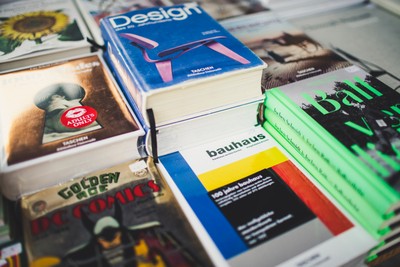Discover a variety of articles that cater to your interests. Whether you're new or experienced, our content is here to inform and engage.
Discover a variety of articles that cater to your interests. Whether you're new or experienced, our content is here to inform and engage.
The Bauhaus movement, born in the early 20th century, was a groundbreaking school of design that sought to unify art, craft, and technology. Its minimalist and functionalist approach to design not only reshaped the world of architecture, furniture, and visual arts but also left an indelible mark on the realms of hardware and software. In this article, we will explore how the Bauhaus movement's principles continue to shape the form and function of hardware and software in the modern digital age.
The Bauhaus Ideals
Founded in Germany in 1919 by Walter Gropius, the Bauhaus school emphasized several key principles:
Form Follows Function: Bauhaus designers believed that the form of an object should be dictated by its intended function. This principle laid the foundation for the development of streamlined and purpose-driven design in both hardware and software.
Minimalism: Simplicity and minimalism were at the core of Bauhaus design. This notion of stripping away the superfluous elements to reveal the essential has had a profound impact on the aesthetics of modern technology.
Unity of Art and Technology: The Bauhaus aimed to merge artistic and technical disciplines. This interdisciplinary approach became a driving force behind the seamless integration of design and technology in modern hardware and software.
Influence on Hardware Form
1. Industrial Design: Bauhaus principles greatly influenced industrial design. Products like the iconic Braun SK4 radio-phonograph by Dieter Rams exemplify the marriage of form and function, with clean lines, uncluttered surfaces, and a focus on user experience.
2. Modern Architecture: Bauhaus architectural concepts, such as the use of glass, steel, and open spaces, have inspired the design of modern tech campuses, creating environments that foster innovation and collaboration.
3. Product Aesthetics: The sleek and minimalistic design of hardware products like Apple's iPhone and MacBook owe a debt to Bauhaus principles, emphasizing simplicity, functionality, and elegance.
Influence on Software Form
1. User Interface Design: The Bauhaus's emphasis on simplicity translates seamlessly to user interface (UI) and user experience (UX) design. Clean, intuitive interfaces like those seen in Apple's iOS and Google's Material Design reflect these principles.
2. Functionality: Bauhaus principles inform the functionality of software, driving the development of user-friendly applications and systems that prioritize efficiency and ease of use.
3. Digital Art: Bauhaus ideals continue to inspire digital artists and graphic designers who create visually striking and functional digital content.
The Future of Bauhaus Influence
As technology continues to advance, the Bauhaus movement's influence on hardware and software form is poised to evolve further. Emerging technologies like augmented reality (AR) and virtual reality (VR) are already drawing from Bauhaus principles to create immersive and user-friendly experiences.
Moreover, the sustainability aspect of Bauhaus—designing for longevity and resource efficiency—holds great promise in shaping the future of hardware, as eco-conscious design becomes increasingly important.
Conclusion
The Bauhaus movement's enduring influence over hardware and software form is a testament to its timeless principles of functionality, minimalism, and the unity of art and technology. From the sleek smartphones we carry in our pockets to the intuitive software that powers our digital experiences, the Bauhaus legacy lives on in the devices and systems that define our modern world. As we continue to push the boundaries of technology, we can expect the Bauhaus ethos to guide the design of future hardware and software, creating a harmonious fusion of form and function for generations to come.






